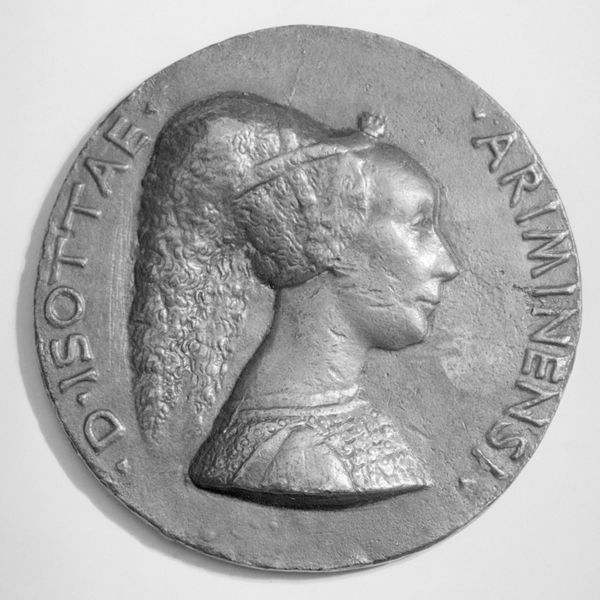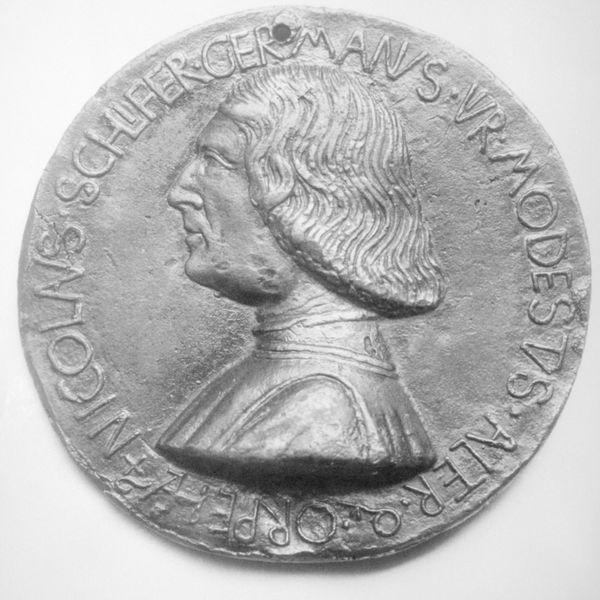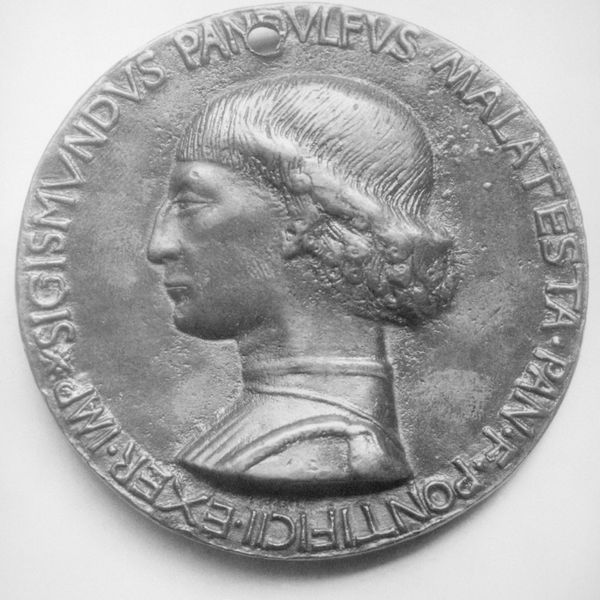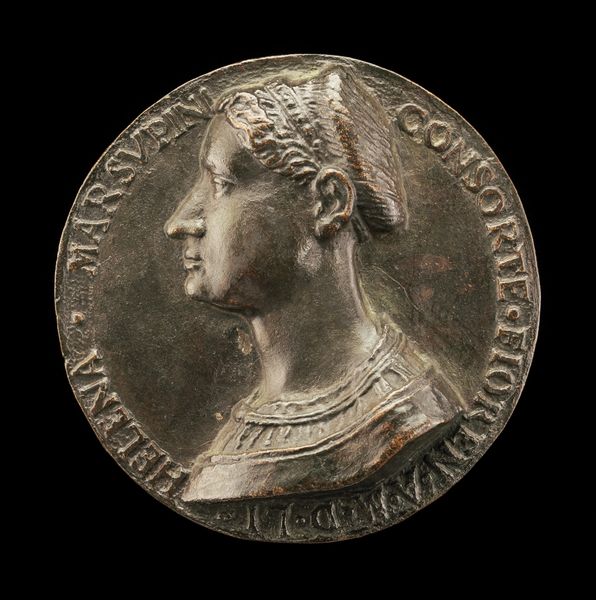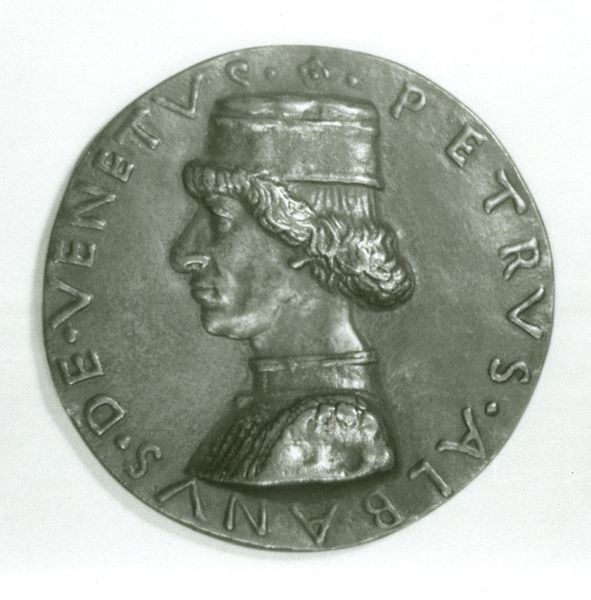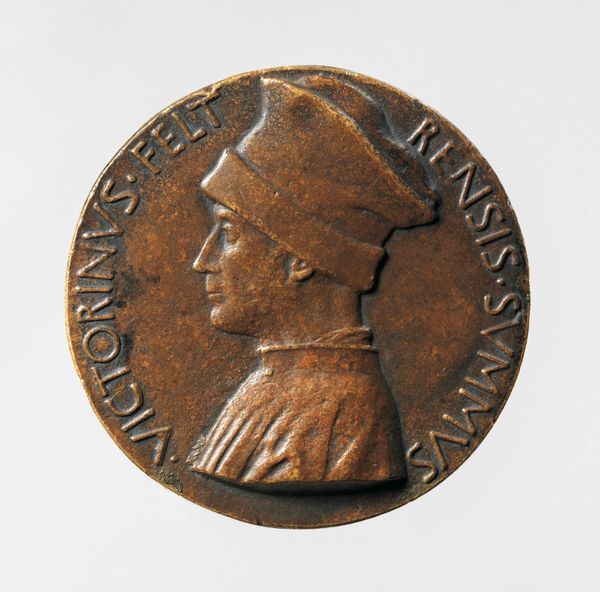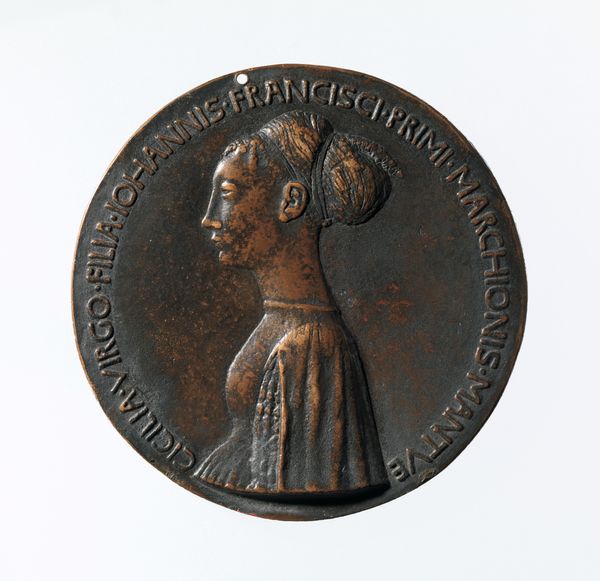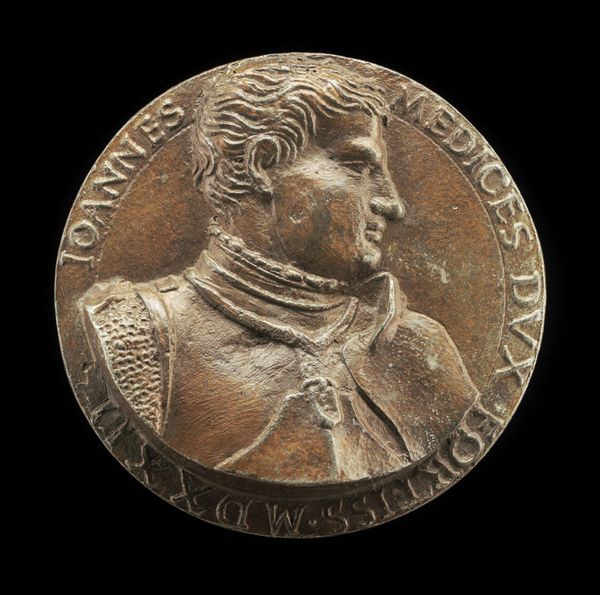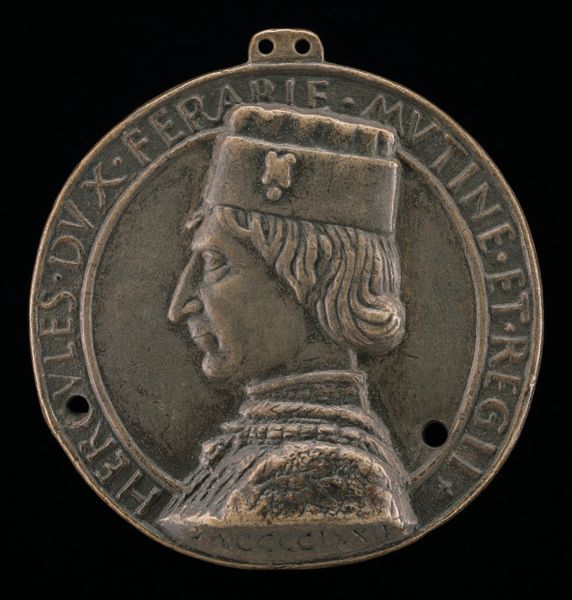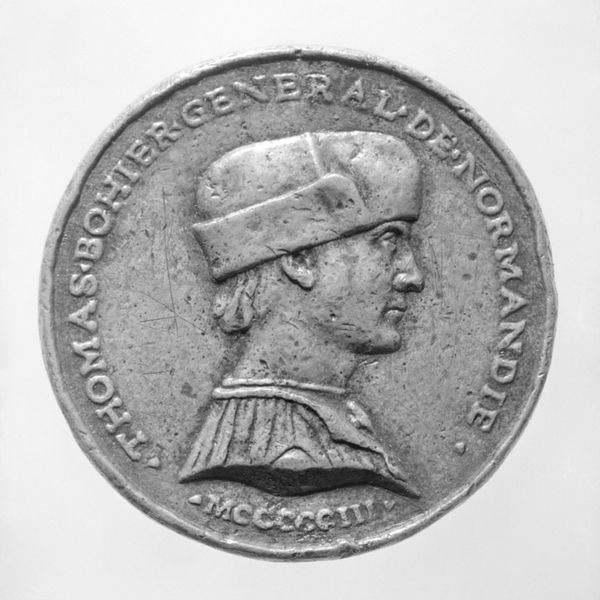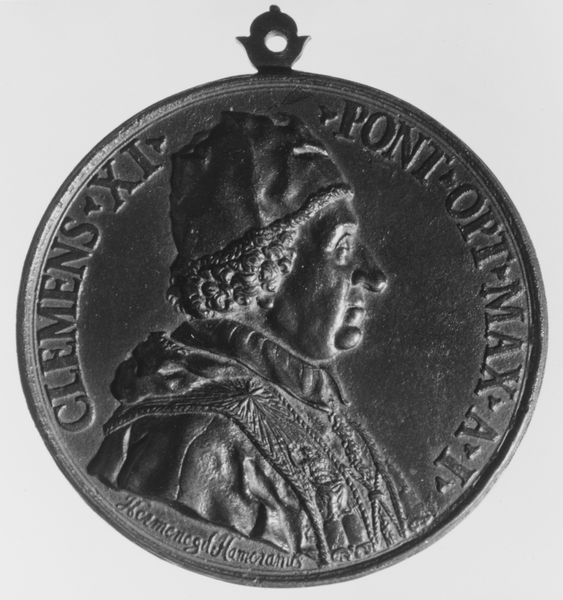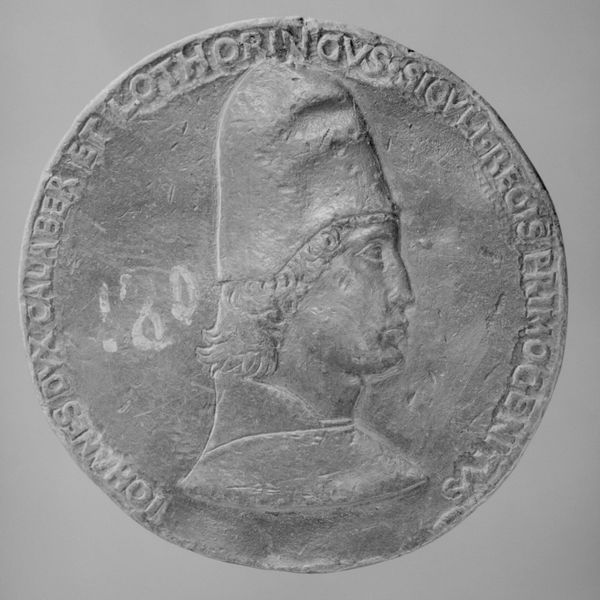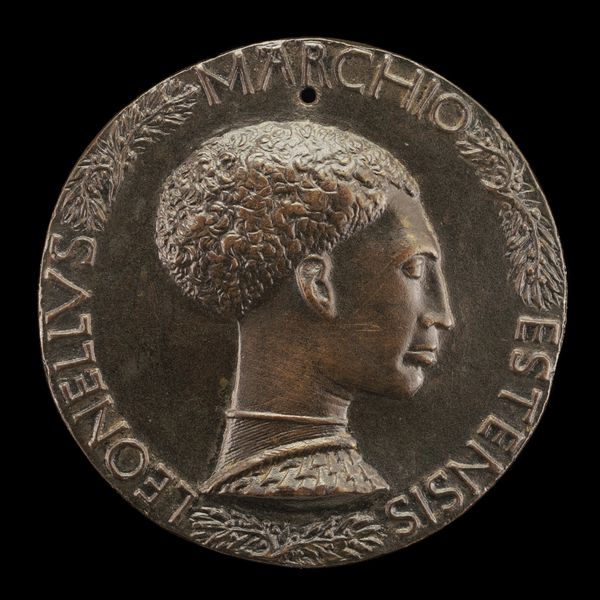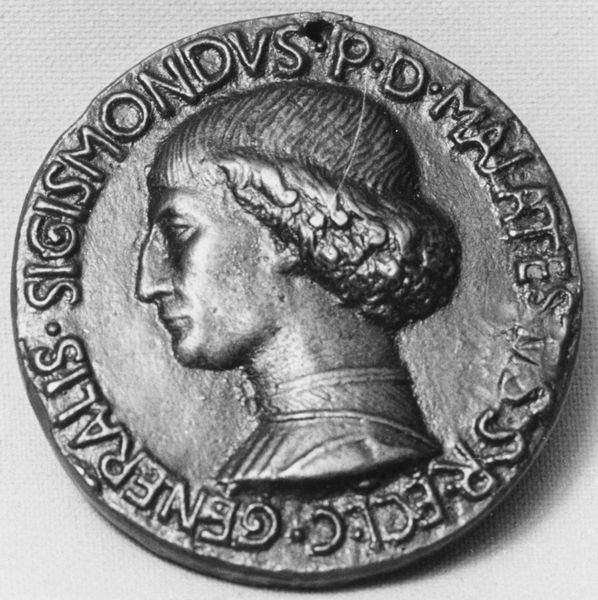
relief, bronze, sculpture
#
portrait
#
sculpture
#
relief
#
bronze
#
11_renaissance
#
sculpture
#
decorative-art
#
italian-renaissance
Dimensions: Diameter: 83 mm
Copyright: Public Domain
Curator: There’s something incredibly powerful in this seemingly simple bronze relief. The work we're looking at, created around 1446, is attributed to Matteo de’ Pasti; it immortalizes Isotta degli Atti of Rimini. Editor: My first impression is the severity and seriousness; she possesses a sharp and penetrating gaze. I'd even go so far as to describe it as emotionally distant. Curator: You’re right, there’s a coolness to it. Isotta was known for her intelligence and influence. The medal portrait as a symbolic object likely intended to broadcast the power and refined taste of the Rimini court, or perhaps it served as a gift or memento to cement alliances. Her direct gaze is self-assured, confident of her role and position in a patriarchal world. Editor: Indeed, in examining her gaze through the lens of power and gender, a complexity emerges. What stories might the piece have sought to conceal? Curator: Certainly. I wonder about her elaborate hairstyle and ornate gown, possibly functioning as armor against the scrutinizing gaze of Renaissance society. These outward expressions of beauty may very well veil her vulnerability as a woman of high standing. Her presentation would have conformed to social expectations, dictating behavior, accomplishments, and family roles. Editor: What’s striking about the composition of the medal, however, is how effectively it immortalizes Isotta in a moment that transcends time. Even without detailed information, it powerfully evokes questions about feminine agency and autonomy within historical narratives. It also asks what’s being preserved versus erased. Curator: A point well taken! What endures with this object across eras are precisely those contradictions—Isotta frozen within the gaze, the inscription identifying her name and origin, juxtaposed with the silent stories contained within her face. Editor: In those fleeting moments, in that contrast, we are invited to contend with a visual emblem loaded with the weight of Renaissance ideals—and to examine these notions more intently as we move toward a contemporary perspective.
Comments
No comments
Be the first to comment and join the conversation on the ultimate creative platform.
